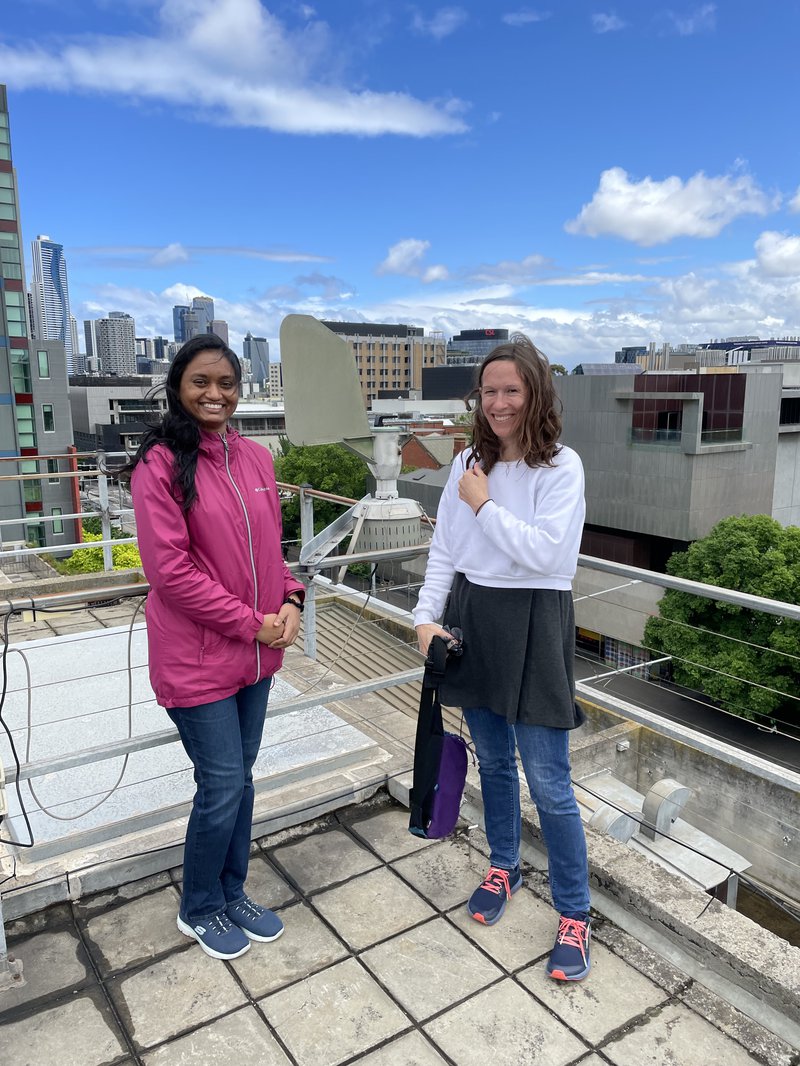International scientists visit Melbourne to study thunderstorm asthma
Nov. 28, 2022
Distinguished US professor visits the University of Melbourne to study pollen rupture and thunderstorm asthma

This grass pollen season, Melbourne Pollen is hosting two international visitors - Professor Elizabeth 'Betsy' Stone and her graduate student, Chamari Mampage.
Betsy and Chamari are from the Department of Chemistry at the University of Iowa, and they are here to detect pollen fragments in the air.
Most airborne particles are inorganic, things like dust, soot and smoke. Betsy's group is one of the few in the world able to measure particles of biological origin, such as fragmented pollen.
So why are pollen fragments important?
Pollen grains themselves are too big to get into the lungs and trigger asthma. They must first be broken into particles small enough to inhale.
Pollen fragments can travel deep into the airways and cause the irritation and swelling of the lung tissue in pollen-sensitized people that are the hallmarks of an asthma attack.
Pollen fragmentation is also thought to be a cause of thunderstorm asthma, the sudden 'epidemics' of asthma among people living in a defined geographical area like a city.
Melbourne is particularly prone to epidemics of thunderstorm asthma, with the world's worst thunderstorm asthma event occuring here on November 21, 2016.
Betsy's visit to Australia is supported by a Fulbright scholarship, and we wish her and Chamari a pleasant time in Melbourne and look forward to hearing the results of their research.


